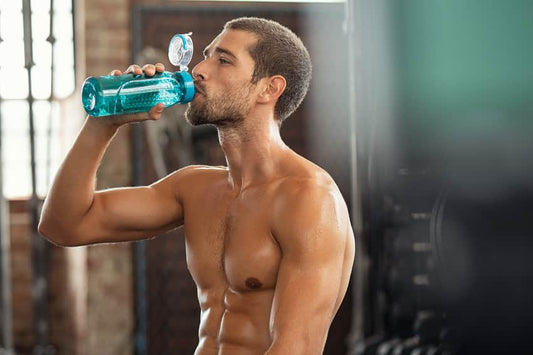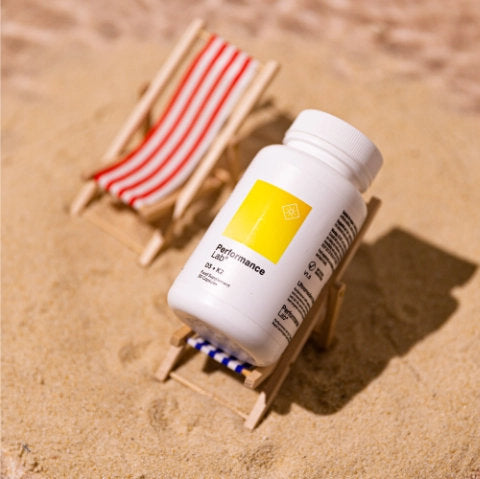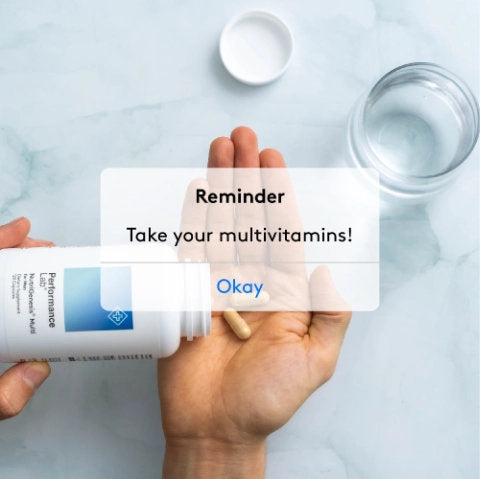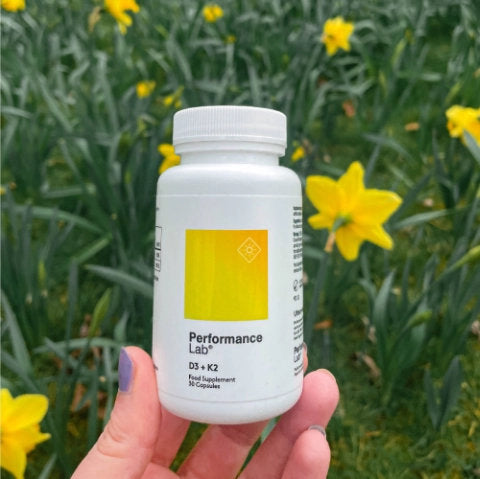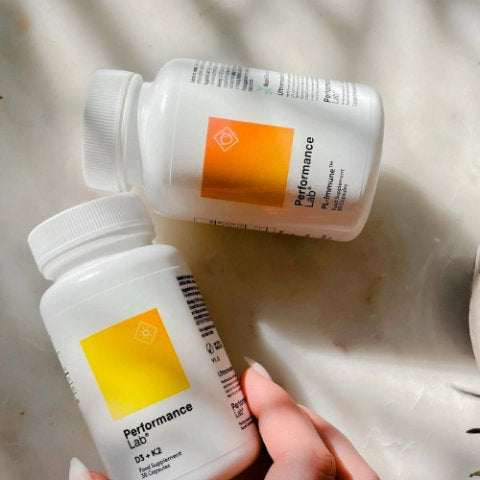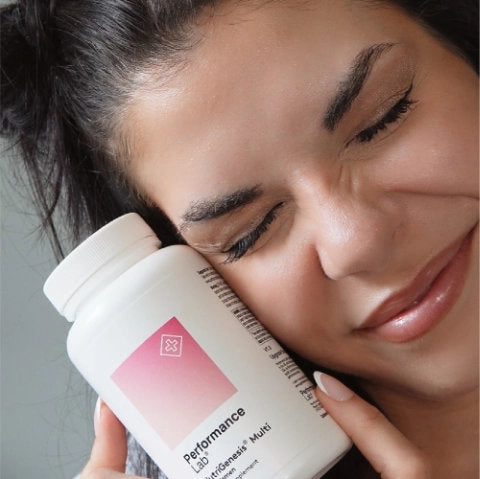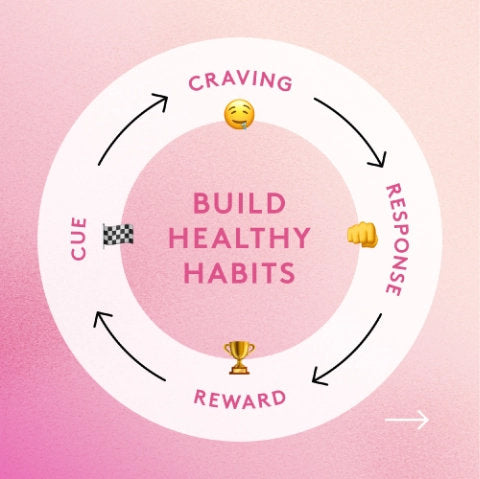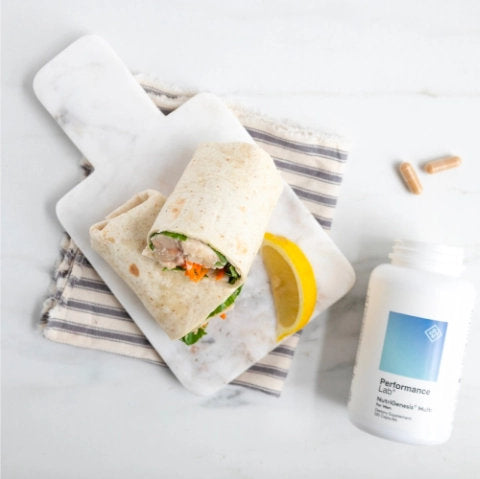If you ever get into a conversation about supplements with someone who's an avid gym-goer looking to gain muscle mass or they are a bodybuilder, one of their most-used supplements is probably creatine.
And there's a good reason for it.
Whatever the goal you're looking to achieve—be it muscle growth, fat loss, strength gain, and what have you, creatine seems to help, making it an obvious choice for Performance Lab Pre - undoubtedly one of the best pre-workout supplements on the market.
So, in honor of all the hype around creatine, let's dissect it a bit more.
What Is Creatine?
Creatine is a compound synthesized in the liver from the precursor amino acids glycine, arginine, and methionine, all of which are obtained through dietary protein or amino acid supplementation.
But creatine isn't just derived from supplements or endogenous production; it's also naturally occurring in several protein-based food sources like red meat and fish 1.
The majority of creatine in the body is found in skeletal muscle, but there are also small amounts found in the brain and testes, with most of it found in the form of phosphocreatine (PCr).
The Many Uses of Creatine
There's a large body of evidence to support the idea that supplementing with creatine can increase muscle availability of creatine and phosphocreatine; thus, it may enhance acute exercise capacity and various training adaptations.
Because of this, creatine is often added to pre-workouts or taken as a standalone supplement.
Without getting too nerdy, here's how creatine works:
The primary metabolic role of creatine is to combine with a phosphoryl group (Pi) to form phosphocreatine through the enzymatic reaction of creatine kinase (CK).
During energy production, ATP (adenosine triphosphate) is degraded into ADP (adenosine diphosphate) and an inorganic phosphate molecule (Pi). This provides energy to fuel metabolic activities.
The free energy that is released from the hydrolysis of phosphocreatine to creatine and phosphate is used as a buffer in the resynthesis of ATP.
This entire process helps to ensure ATP availability during maximal effort anaerobic activities 1.
In simplified terms, the function of creatine is to assist in the regeneration of ATP—the energy that fuels your workouts (and your entire body).
In fast-twitch skeletal muscles, there is a large reserve of phosphocreatine available for immediate regeneration of ATP during high intensity, short-duration work 2.
But as phosphocreatine levels decrease with intense activity, energy availability also declines because of a lack of ATP regeneration needed to meet the demands of high-intensity exercise.
With all of that said, these are the three main reasons creatine should be in your stack:
1. Creatine Increases Aerobic Capacity
Traditionally, creatine has been shown to benefit high intensity, short-duration anaerobic exercise, but it may also help aerobic exercise. It does so in two ways 3:
- Potentially changes substrate utilization during aerobic activity lasting over 150 seconds.
- May also decrease blood lactate accumulation with low-intensity aerobic activity, thereby improving both the lactate threshold and ventilatory threshold.
2. Creatine Boosts Muscle Gains
Creatine is usually the gold standard for bodybuilders to include in their stack because it can have a positive impact on muscle growth.
The gains seen with creatine supplementation are often the result of the ability to perform more high-intensity activity because of increased availability of phosphocreatine to regenerate ATP.
As a result, you can work harder for longer, allowing more significant increases in muscular hypertrophy 4.
There's more.
Creatine supplementation also helps to increase levels of insulin-like growth factor 1 (IGF-1), which has a potent anabolic effect on skeletal muscle. It may also further enhance muscle growth by mediating the growth-promoting effects of circulating growth hormone (GH) 5.
3. Creatine Can Enhance Your Recovery
If you struggle with proper recovery, creatine supplementation may help with that, too.
Research has shown that the combination of creatine and glucose improves both creatine and carbohydrate retention in muscle 1.
And since replenishing glycogen stores is critical to proper muscle recovery, creatine may help to boost up stores in athletes that burn large amounts of glycogen during training.
To add to that, creatine supplementation may also reduce the extent of muscle damage caused by intense physical activity.
In people supplementing creatine, lower levels of specific markers of inflammation, including cytokines, prostaglandins, tumor necrosis factor (TNF) alpha, and lactate dehydrogenase (LDH) have been found 6, 7.
Types Of Creatine

While there are several types of creatine for you to choose from, we're only going to cover two of the most popular forms: creatine nitrate and creatine monohydrate.
Creatine Nitrate
Creatine nitrate is the newest form to appear on the market and has the same role as creatine monohydrate in the body. However, there is some research showing that it has a higher water solubility, thus possibly making it more effective.
Nitrates are attached to the creatine molecule due to the inherent effects of nitrates in the body. Studies show that they may be a useful supplement to improve endurance performance and boost the effects of other supplements.
Once ingested, nitrates can be reduced to form nitric oxide, which has several physiological benefits for exercise.
Nitrates have also been shown to reduce oxygen depletion, helping to increase exercise tolerance and improve muscle efficiency 8.
Creatine Monohydrate
Creatine monohydrate is by far the most common form of creatine used in supplements, the most widely researched, and in our opinion, the best.
There is a lot of research backing creatine monohydrate as one of the most effective ergogenic nutritional supplements available to athletes looking to increase high-intensity exercise capacity and increase lean body mass during training 1.
As the name implies, it is a creatine molecule bound to water, making it readily available by merely dissolving it in water.
As we mentioned before, creatine monohydrate provides the substrate needed to resynthesize ATP and continue work effort. And an increase in work effort means more muscle and strength gains.
Another form of creatine monohydrate you'll see is called micronized creatine monohydrate, which means that the creatine is micronized, or mechanically processed, to improve water solubility.
Enhanced water solubility, therefore, improves your body's ability to absorb the creatine and effectively utilize it.
Which Is Better: Nitrate Or Monohydrate?
While creatine nitrate may provide you with a slightly better pump than creatine monohydrate because of the addition of nitrate, and its absorption rate is 100% as opposed to 98% 9, the minimal differences between the two molecules is nothing to get bent out of shape over and completely axe creatine monohydrate from your stack.
Creatine monohydrate has been proven time and time again to have high solubility and high bioavailability, meaning it's efficiently taken up by muscles and a hard one to beat.
One specific study looked at the relationship between creatine nitrate and its effect on increasing performance.
Researchers found no significant difference in lifting volume between the creatine nitrate and creatine monohydrate groups, even though the group taking creatine nitrate had an increase in lifting volume compared to those taking the placebo 8.
It's also important to remember that with creatine monohydrate, more sometimes isn't always better.
Research shows that oral bioavailability of creatine monohydrate is dose-dependent, with a lower dose having greater bioavailability than a higher dose 10.
This reduced bioavailability with high dose creatine monohydrate may be due to solubility issues rather than transport or carrier interactions at the absorption site.
How Much Creatine Should You Have?
When it comes to creatine, there’s no doubt it’s one of the most effective and well-researched supplements for muscle growth, strength, and performance.
But how much should you actually be taking?
For most people, the standard recommended dose of creatine is around 3-5 grams per day. This amount has been shown to increase creatine stores in the muscles and enhance workout performance, especially during high-intensity, short-duration exercises like weightlifting and sprinting.
If you’re starting out or looking to quickly saturate your muscles with creatine, you might opt for a loading phase, which involves taking 20 grams of creatine per day (split into smaller doses) for the first 5-7 days, followed by the regular maintenance dose of 3-5 grams.
Once your muscles are fully saturated with creatine, that 3-5 gram daily dose is typically enough to maintain those levels and continue to support muscle strength and growth.
Can You Have Too Much Creatine?
While creatine is undeniably effective, more isn’t always better.
Taking too much creatine—or stacking it across multiple supplements—can lead to unwanted side effects such as:
- Water retention and bloating: Creatine pulls water into your muscles, which can result in water retention. While this is often desirable for muscle fullness, too much creatine can lead to bloating and puffiness, masking muscle definition.
- Digestive issues: High doses of creatine, especially in a short time, can cause stomach discomfort, nausea, or even diarrhea for some people.
- Diminished returns: Once your muscles are fully saturated, taking more than the recommended dose doesn’t lead to greater gains. It can actually waste creatine, as your body can only absorb so much at once.
Many pre-workout supplements contain creatine, but if you’re already taking a standalone creatine supplement or getting enough from other sources, this can lead to overconsumption.
This is where the balance becomes critical— you don’t want too much creatine in your routine, especially if you’re aiming for lean muscle gains or want to avoid bloating and discomfort.
For optimal results, it’s smart to pick a pre-workout that doesn’t contain creatine, giving you more flexibility to control your creatine intake. Instead, look for a pre-workout that includes ingredients that work synergistically with creatine, enhancing energy, endurance, and muscle performance without overwhelming your system.
This is where Pre Lab Pro® comes in.
Pre Lab Pro®: The Perfect Pre-Workout to Stack with Creatine

Unlike many pre-workouts that load up on creatine, Pre Lab Pro® skips the creatine altogether—letting you decide how much creatine to add to your routine.
It’s packed with scientifically-backed ingredients that complement creatine and amplify its effects, giving you a balanced, high-performance pre-workout without the bloat or overload.
- L-Citrulline (Kyowa Quality®) enhances nitric oxide (N.O.) production, improving blood flow and nutrient delivery to muscles, helping creatine work more efficiently.
- Red Beet Powder boosts N.O. levels for better endurance and strength, allowing you to train harder and get the most from your creatine supplementation.
- Natural caffeine and L-Theanine provide a smooth, clean energy boost without the jitters or crash, keeping you focused and energized through intense sessions.
- L-Tyrosine supports mental focus and stress resilience, so you stay sharp during challenging workouts, helping you push harder and recover better.
By stacking Pre Lab Pro® with creatine, you can control your creatine intake while still getting all the benefits of a high-quality pre-workout. Whether you're loading creatine or maintaining your daily dose, Pre Lab Pro® gives you the flexibility to optimize your training without overdoing it.
- RB Kreider, DS Kalman, J Antonio, et al. International Society of Sports Nutrition position stand: safety and efficacy of creatine supplementation in exercise, sport, and medicine. J Int Soc Sports Nutr. 2017 Jun; 14(18).
- M Wyss, R Kaddurah-Daouk. Creatine and creatinine metabolism. Physiol Rev. 2000 Jul; 80(3): 1107-213.
- JD Branch. Effect of creatine supplementation on body composition and performance: a meta-analysis. Int J Sport Nutr Exerc Metab. 2003 Jun; 13(2): 198-226.
- TW Buford, RB Kreider, JR Stout, et al. International Society of Sports Nutrition position stand: creatine supplementation and exercise. J Int Soc Sports Nutr. 2007; 4: 6.
- GR Adams. Insulin-like growth factor in muscle growth and its potential abuse by athletes. West J Med. 2001; 175(1): 7-9.
- MB Cooke, E Rybalka, AD Williams, PJ Cribb, A Hayes. Creatine supplementation enhances muscle force recovery after eccentrically-induced muscle damage in healthy individuals. J Int Soc Sports Nutr. 2009 Jun 2; 6: 13.
- RV Santos, RA Bassit, EC Caperuto, LF Costa Rosa. The effect of creatine supplementation upon inflammatory and muscle soreness markers after a 30km race. Life Sci. 2004 Sep 3; 75(16): 1917-24.
- E Galvan, DK Walker, SY Simbo, et al. Acute and chronic safety and efficacy of dose dependent creatine nitrate supplementation and exercise performance. J Int Soc Sports Nutr. 2016; 13: 12.
- JR äger, M Purpura, A Shao, T Inoue, RB Kreider. Analysis of the efficacy, safety, and regulatory status of novel forms of creatine. Amino Acids. 2011 May; 40(5): 1369-83.
- EA Alraddadi, R Lillico, JL Vennerstrom, TM Lakowski, DW Miller. Absolute Oral Bioavailability of Creatine Monohydrate in Rats: Debunking a Myth. Pharmaceutics. 2018; 10(1): 31.



